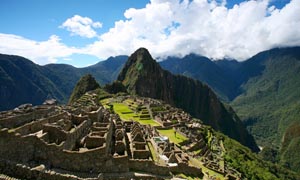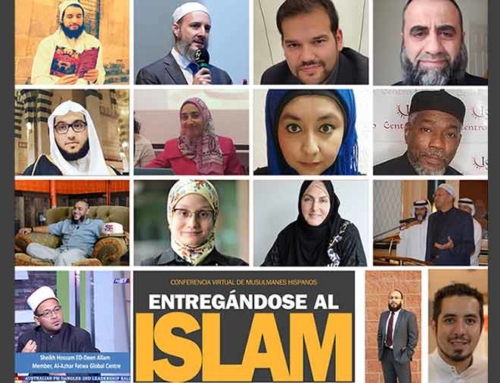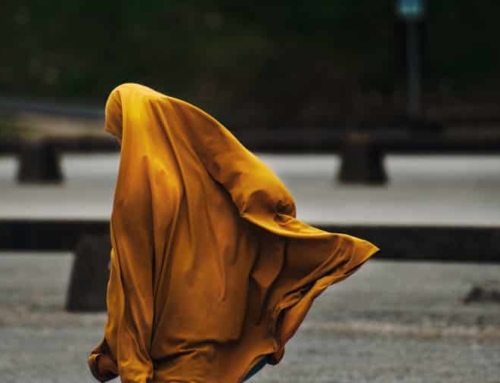By: Saulat Pervez
Muslim Astronomers and Mariners Guided Columbus
It is a known fact that Muslim Europeans of the Middle Ages were far more advanced than their non-Muslim counterparts, thanks to the Golden Ages of Spain and Sicily under Muslim rule. Yet, many people forget that Muslim astronomers and mariners played an important role in the discovery of the New World – for instance, the astronomical tools and maps which Columbus used had been perfected by Muslims. In fact, Muslims had made contact with the New World even before Columbus! [Click here to learn about Islam in Spain and Sicily.]
In his survey of the Muslims in Latin America, Ahsani writes in the Journal of the Institute of Minority Affairs (1984), “Muslim navigators from Spain and Africa had developed contacts with Mexico and other parts of Central and South America well before Columbus.” For evidence, he cites, “Along the coast of South America Arab coins have been found dating back to 800 AD.”
Islamic Influence on Discovery: Muslim Astronomers and Mariners
Furthermore, Vasco de Gama consulted with Muslim astronomer Ahmad bin Majid, and a map depicting the Western hemisphere, discovered in 1929 and created by navigator and cartographer Piri Muhyi’ al-Din Re’is (d. 1554), suggests that it could only have been made through first-hand experience in the Americas. To clinch the issue, Ahsani writes that Portuguese and Spanish discovery missions “were led by Muslim mariners – Moriscos.”
877-Why-Islam visits the oldest masjid in Brazil and all of Latin America. This masjid was built in 1929 and is the center of many activities in Sao Paulo, Brazil. Watch this video to get glimpses of this amazing architecture. Witness how your rewards multiple, Masha Allah. Please continue your support at https://icnanj.wufoo.com/forms/donation-for-877whyislam-dawah-project/.
The Very First Christian to See the Americas Converted to Islam
By a rare paradox of history, the first Christian to see the American land, Rodrigo de Triana, or Rodrigo de Lepe, on his return to Spain became a Muslim, abandoning his Christian allegiance “because Columbus did not give him credit, nor the King any recompense, for his having seen—before any other man in the crew—light in the Indies.”[1]
Columbus’ 1492 expedition coincided with the fall of Granada, the very last Muslim stronghold in Spain. This led to some very harsh times for Spanish Muslims, culminating in the Spanish Inquisition. This turn of events encouraged many displaced Muslims to go to the New World in the hopes of freely exercising their religion once again.
Such circumstances actually remind one of the cruelties some early Muslims endured at the hand of Meccan pagans; in order to escape ruthless persecution, a small number of Muslims had sought refuge in Christian Ethiopia. [Click here to read about Jafar ibn Abi Talib’s encounter with the King of Ethiopia.] Their patience and perseverance eventually paid off when they were able to return to the Muslim community of Madina. Similarly, the tortured Spanish Muslims were able to find a haven for themselves in the Americas.
Islamic Influence on Religious Freedom and Art in the New World
In fact, freedom of religion is one of the hallmarks of Islam. The Qur’an states, “There’s no compulsion in religion.” (2:256) Muslim empires over time – from Abbasids in Baghdad to the Umayyads in Cordoba to the Ottomans in Istanbul – have awarded their citizens the right to practice their religion, be it Christianity, Judaism, or Zoroastrianism. By extension, Muslims also cherish the right to freely exercise their own religion. No wonder they chose to be pioneers to a land very few had seen. [Read more: Muhammad’s Charter of Freedom of Religion to St. Catherine’s Monastery]
Ahsani writes, “Muslim artisans … brought their art to the New World. In the 16th and 17th centuries, they came to the colonies without their families and their descendants – Mestizos – born of local women, preserved their art in Mexico, Guatemala, Cuba, Columbia, Ecuador, Peru, Bolivia, and Brazil.”
An interesting proof of this comes from the fact that, in response, Spain created a “whole body of laws and regulations” (Bazan) in order to keep Muslims from inhabiting the New World. However, the Queen was unsuccessful in curbing this flow of migration, so much so that an increasing number of Muslims and Jews continued to settle in Latin America in the similar hopes of freely practicing their faiths. In 1539, Spain announced the prohibition of the “transfer to the West Indies of sons or grandsons of persons” of Muslim or Jewish ancestry. Charles V further “ordered the expulsion” of Muslims living in the Americas in 1543.
Muslim Discovery and Habitation of the Americas
The above details clearly confirm that Muslims played a significant role in the “discovery” and habitation of the Americas. Yet the single-most important proof of Muslim existence in the Americas comes in the form of slaves who were transported from Africa. Unfortunately, most of these slaves encountered a fate similar to the Spanish Muslims. They were forced to convert to Christianity:
Baptism thus became a moral obligation of the masters toward their slaves…As a consequence, the newly arrived Africans were converted on a large scale. The Jesuit Pedro Claver, who officiated in Cartagena, Colombia, in the first half of the seventeenth century, reportedly baptized more than three hundred thousand Africans and was canonized for this good work… Conversions—at least superficial ones—were thus achieved through harsh punishment…the non-Catholic Europeans were allowed to continue their rites in the privacy of their homes, but the slaves’ religions became illegal. After the Muslim revolt of 1835, the Brazilian masters had six months to baptize their slaves and give them some religious education, after which they were liable to a fine for each non-Christian slave they owned.[2]
The Legacy of Islam in Post-Columbian America: A Resurgence of Muslim Communities
The gravity and long-term impact of this predicament becomes evident when Diouf elaborates that, “With a documented presence of five hundred years, Islam was, after Catholicism, the second monotheist religion introduced into post-Columbian America. It preceded Lutheranism, Methodism, Baptism, Calvinism, Santeria, Mandible, and Voodoo to name a few … but, not one community currently practices Islam as passed on by preceding African generations.”
Just like Spain and Sicily, Latin America was successful in wiping out Muslims from its lands. However, with time, it was reborn as a result of waves of Muslim migrants in the recent past who have, like their predecessors, chosen to call this continent their home.
[1] Rafael Guevara Bazan, “Some Notes for a History of the Relations Between Latin America, the Arabs and Islam.” The Muslim World 61 (1971): 284-92.
[2] Sylviane A. Diouf, Servants of Allah: African Muslims Enslaved in the Americas. New York: New York UP, 1998.
Got Questions?
We have Answers. Get in touch now.








